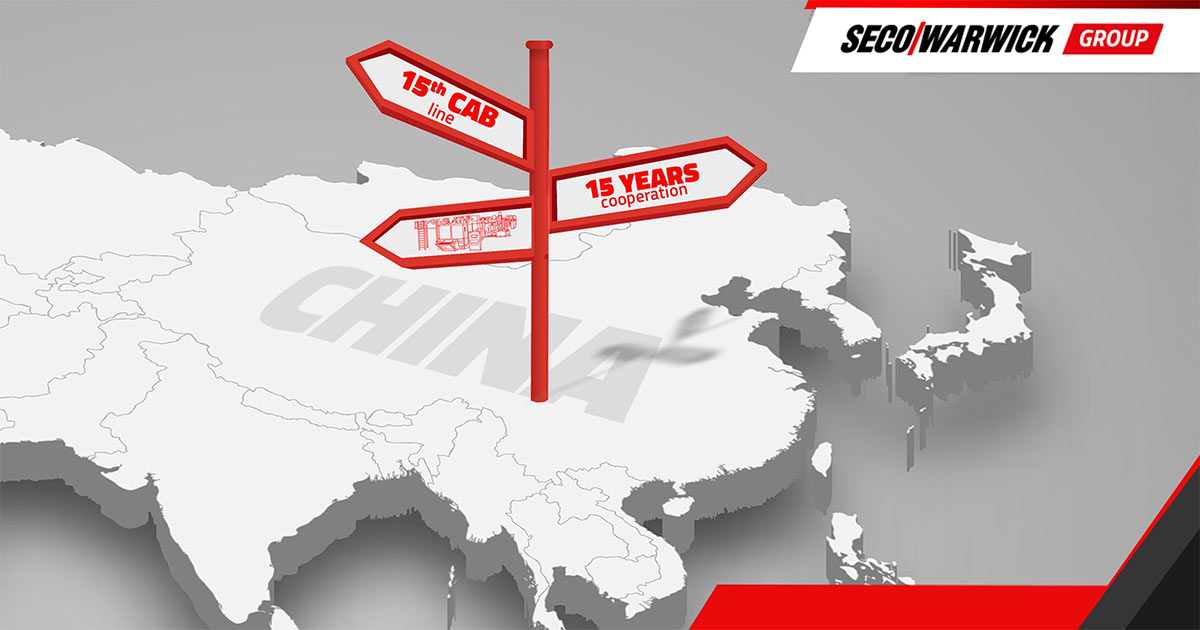Vacuum furnace for metal 3D printing manufacturers
Vector 3D is the evolution of the top SECO/WARWICK product – single-chamber vacuum furnace. This solution combines all the advantages of gas quenching units and meets the growing requirements of the Additive Manufacturing market.
Vector 3D allows to perform processes such as sintering, debinding, stress relieving, aging or solution heat treatment which are essential for the metal 3D printing sector.
Do I need a furnace for metal 3D printing processes?
Heat Treatment is necessary for the most common metal 3D printing technology on the market. Laser based technology (EOS, SLM, etc) makes it possible to print metal parts; however, such elements have an irregular molecular structure. Stress relieving processes or aging processes help to achieve more uniform structure free from inside tensions. As a result, printed elements will have less tendency to crack in unexpected ways.
In terms of Binder Jetting technology (ExOne, Desktop Metal, etc.), heat treatment is not only an option but part of the printing process. As a result of printing, a “green part” is produced that is a combination of metal powder and binder. In sintering process metal powder melts together and the binder is removed. The heat treatment process converts the green part to metal.
Both processes can be performed in VECTOR® 3D vacuum furnaces designed and manufactured by SECO/WARWICK. This state-of-the-art vacuum furnace is specifically designed for dealing with binder particles and contamination produced from the sintering process.
What kind of heat treatment processes are common for metal 3D printing?
Sintering, stress relieving and aging are the most common ones; however, it depends on the printing technology. In the case of binder jetting technology, we obtain a “green part” that is a combination of metal powder and binder. In the sintering process, metal powder melts together and the binder must be removed. It means that the green part becomes metal after the heat treatment process.
Laser-based technology can also print metal parts, however, such elements have an irregular molecular structure. Stress relieving or aging processes help to achieve more uniform structure free from inside tensions. As a result, printed elements will have less tendency to crack in unexpected ways.
It is important to remember that the printed part, after necessary postprocessing, might require further heat treatment processes, the same as a cast element produced in the traditional way. It is worth considering a furnace that will be in a position to perform further heat treatment processes. SECO/WARWICK’s VECTOR 3D vacuum furnace is a perfect example of a universal unit where all possible processes can be performed. Additionally, the furnace is able to deal with binder particles that are the natural side effect of sintering. 5 different protection systems keep the furnace in good condition and guaranteed long performance life.
I already have vacuum furnace. Can I use it also for 3D printing applications?
It depends. Most vacuum furnaces can be adjusted to perform stress relieving or aging processes. If the required temperature is in the scope of furnace’s range, there should be no issues to cover that area. The situation becomes more complicated in terms of binder jetting technology and sintering processes. The binder produces vapors during heat treatment processes and those vapors might accumulate on a cold section of the furnace, pumping system or power feedthrough. As a result, it could decrease the lifetime of some furnace components or even cause a serious short circuit that might result in a fire. Vacuum furnaces, like the VECTOR 3D, are specially designed for Binder Jetting processes. They are additionally equipped with protective systems which help to keep the furnace in good condition for a long time. Naturally, a furnace designed for binder jetting can be used for any other processes the same as regular vacuum furnace. Bottom line, a vacuum furnace is the best possible solution for AM applications; however, not every vacuum furnace is prepared to deal with the specific requirements related to AM processes.
I am planning to have several metal 3D printers in several technologies. Can I have a furnace that will handle all of them?
Yes. Vacuum furnaces are universal units that can handle most of the heat treatment process. Sintering, stress relieving, aging — as well as hardening, carburizing, annealing, brazing, coating, tempering and solution heat treatment — can all be performed in one unit. Naturally, the furnace needs to be configurated accordingly during the design and construction stage. Aftermarket upgrades might be too expensive. As the furnace is usually a 10-30 year investment it is always wise to think about your needs in the future. SECO/WARWICK’s VECTOR 3D vacuum furnace is a perfect example of a universal unit, where all the HT processes can be performed. Additionally, it is configured for AM process including debinding operations.
There are many types of furnaces on the market. Which one is the most optimal for metal 3D printing applications?
Today metal 3D printing concentrates on stainless steel and superalloys like titanium-based or aluminum-based material, etc. In these cases, heat treatment processes need to be performed in a zero oxygen environment; this can be achieved either by using an atmospheric-type furnace with the protective atmosphere guaranteed by gas mixtures or by a vacuum-type furnace where the oxygen level is reduced by a certain level of vacuum. Trends on the market show that basic atmospheric lab size furnaces are being used for low volume production of simple components and prototyping, mainly due to low equipment cost, or wherever utilization costs and preparation time is not an important factor. For medium and large size production of components for specialty markets such as aerospace, vacuum type furnaces like the VECTOR 3D is a preferred choice. Higher purchase costs compared to simple atmospheric type equipment are offset by extended furnace utilization.
My printer working zone is 400x250x250. Shall I consider the same furnace size?
It depends. For prototyping purposes where the printing process takes place only occasionally, this might be an optimal solution. However, for medium and high volume production, equipment efficiency needs to be taken into consideration. Increasing printing speed is one of the key factors for all printer producers nowadays. As a result, printing speed is growing from one month to another. On the other hand, batch heat treatment processes generally run in fixed timeframes, so speed improvement is not that simple because it is impossible to cheat the physics. This is the reason why printer users often decide on a larger furnace capable of processing several printed batches at the same time. This is how the size of the furnace can compensate for the increasing speed of printers. Today, most printer users have more than one unit, so that should be taken into consideration. Furnaces are usually the long life investment, and you don’t want it to be “the weakest link in your chain”.
This is the reason why the SECO/WARWICK VECTOR 3D is offered in 4 standard sizes (250x250x400; 400x400x600; 600x600x900 and 900x900x1200). If the customer requests other dimensions, SECO/WARWICK is always open for custom designs. Numerous custom designed furnaces can be found in the company’s portfolio, among them a huge all metal vacuum vacuum furnace 32m long with temperature uniformity +/-3°C and a horizontal vacuum furnace built for 120-ton loads.



